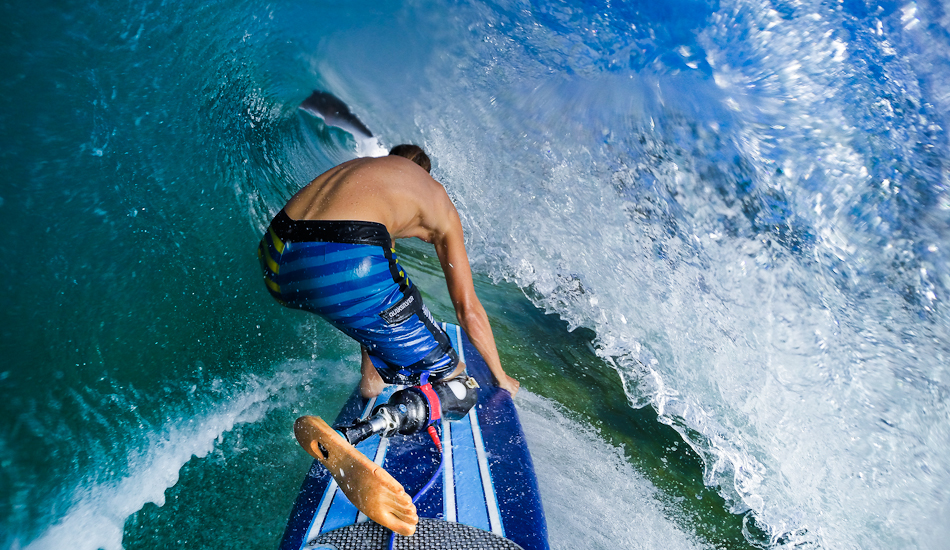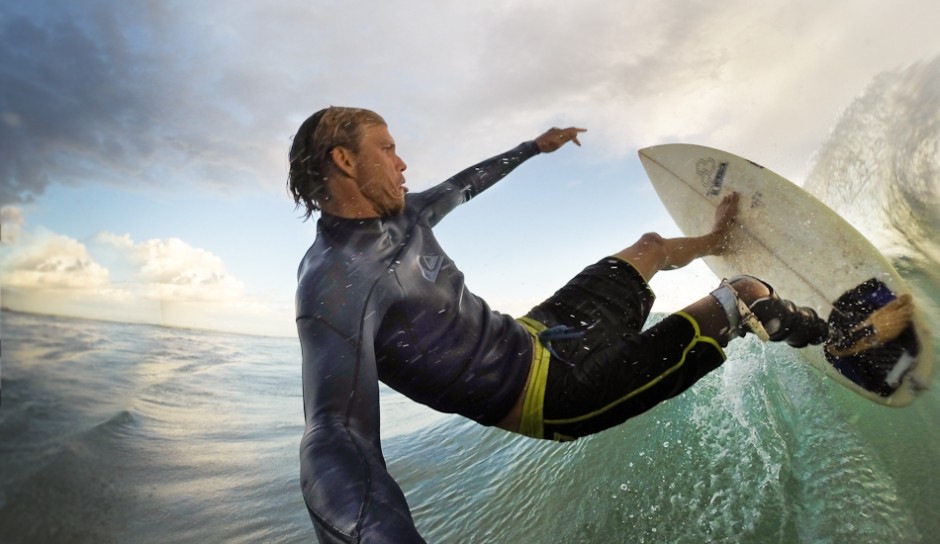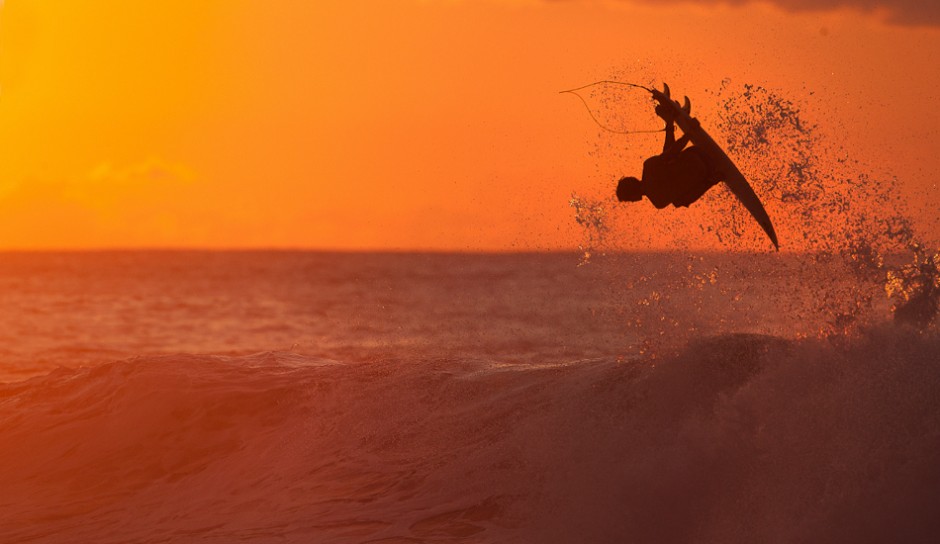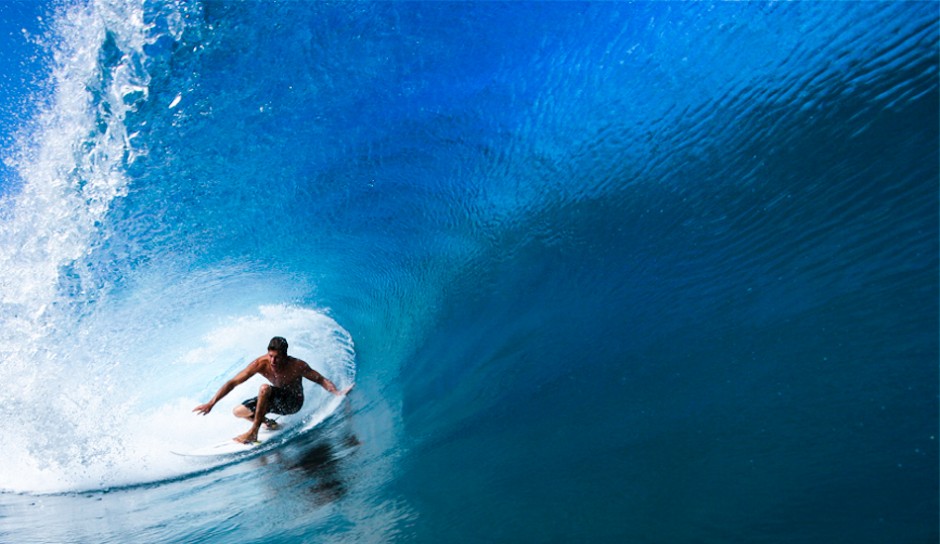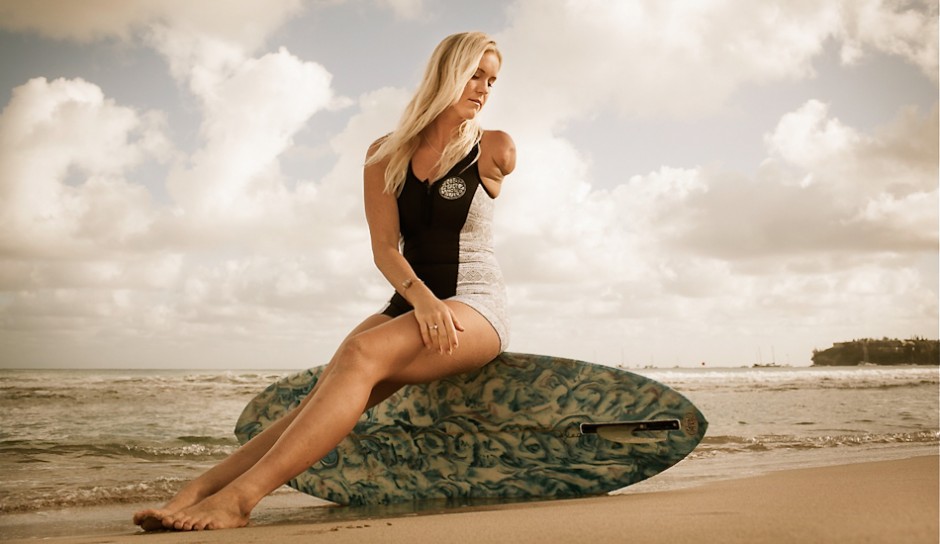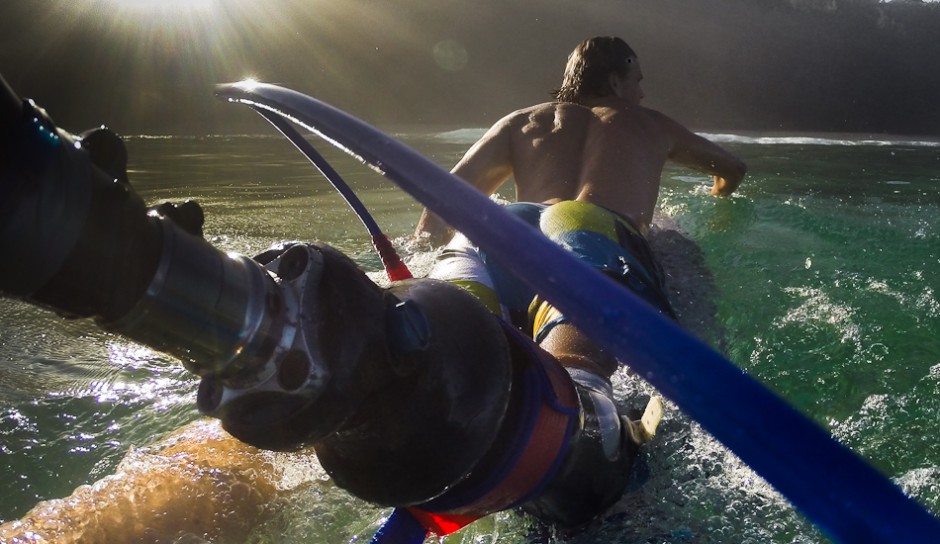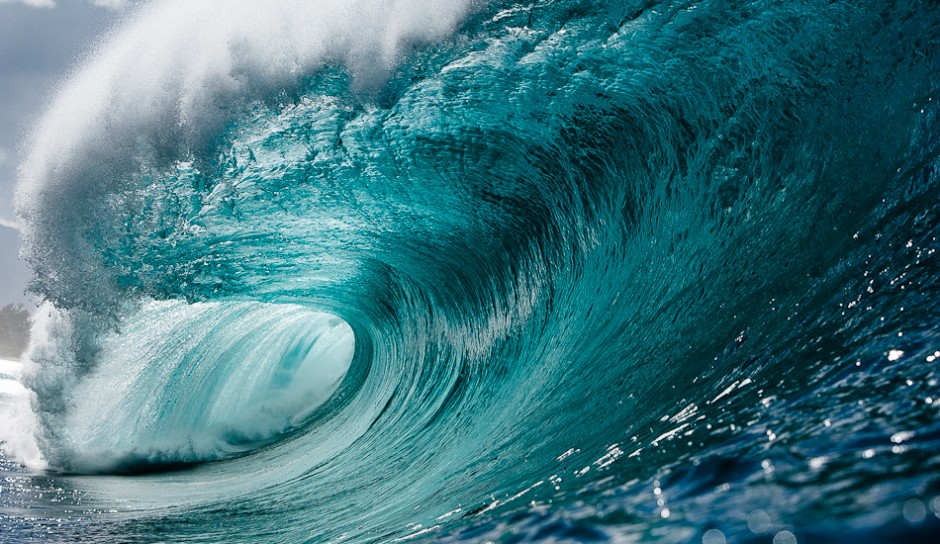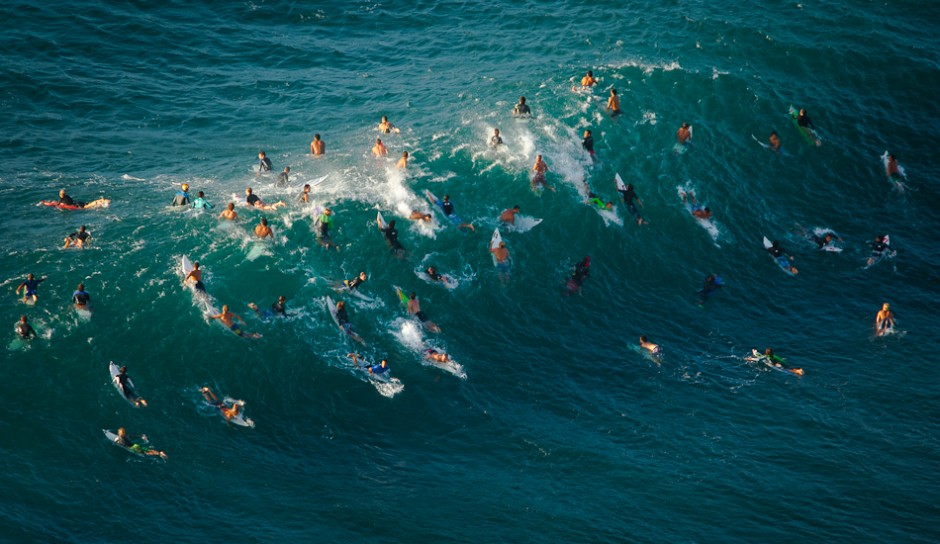
Shot from a helicopter mid-afternoon at Pipe. Shooting from a heli is a bit tough as the pilot can’t hover and wait for sets. Large loops from Waimea to Sunset are needed to not piss off the homeowners in the area. Always gotta keep moving. Communication is key with the pilot. If you are out of rhythm with your loops, you could very easily miss all the sets. Though Pipeline is the most photographed wave in the world, shooting from the sky can give it a different look and feel. 1/800@f8 ISO 125. Shot with a 70–200mm on the long end. Photo: Mike Coots
